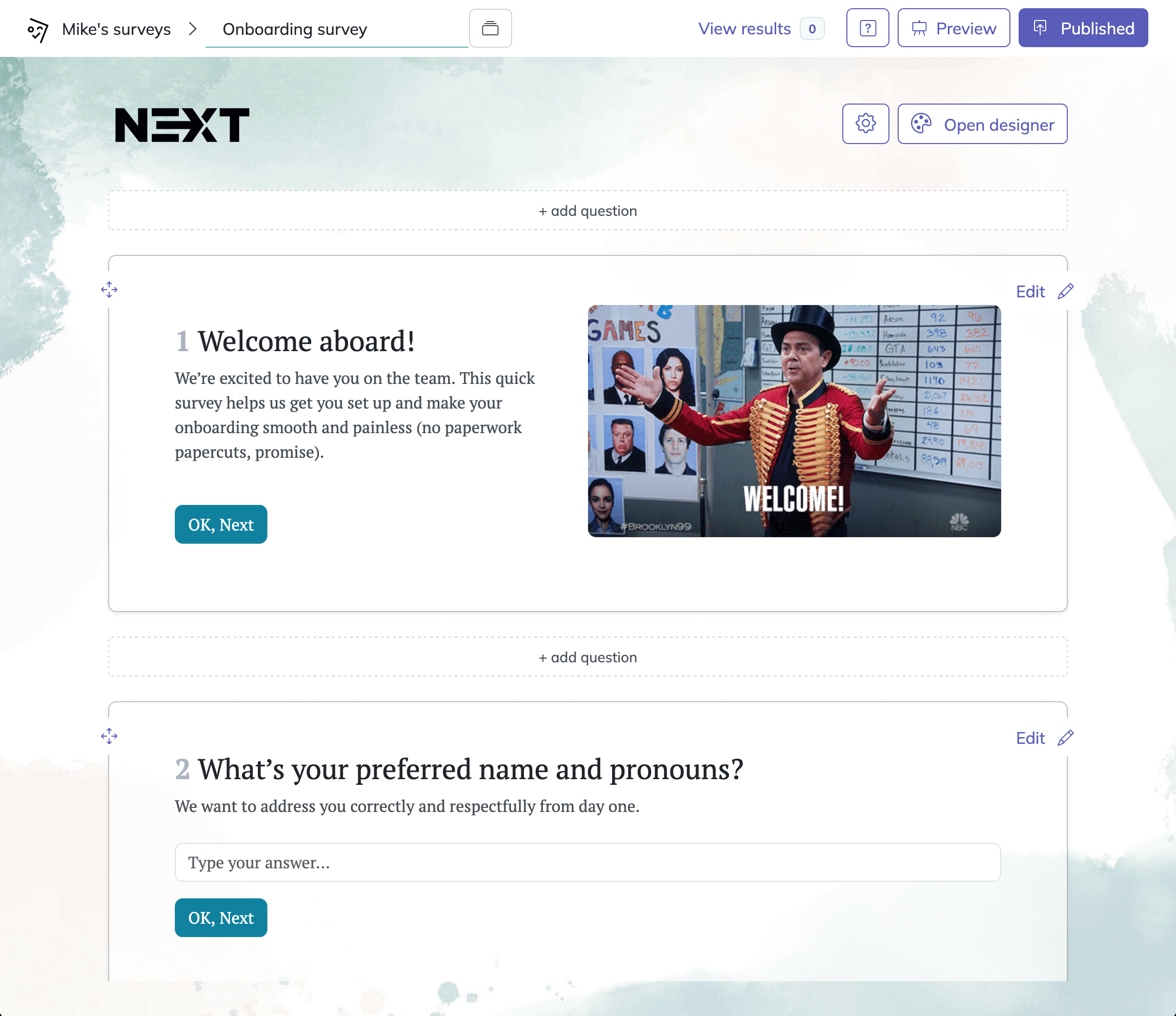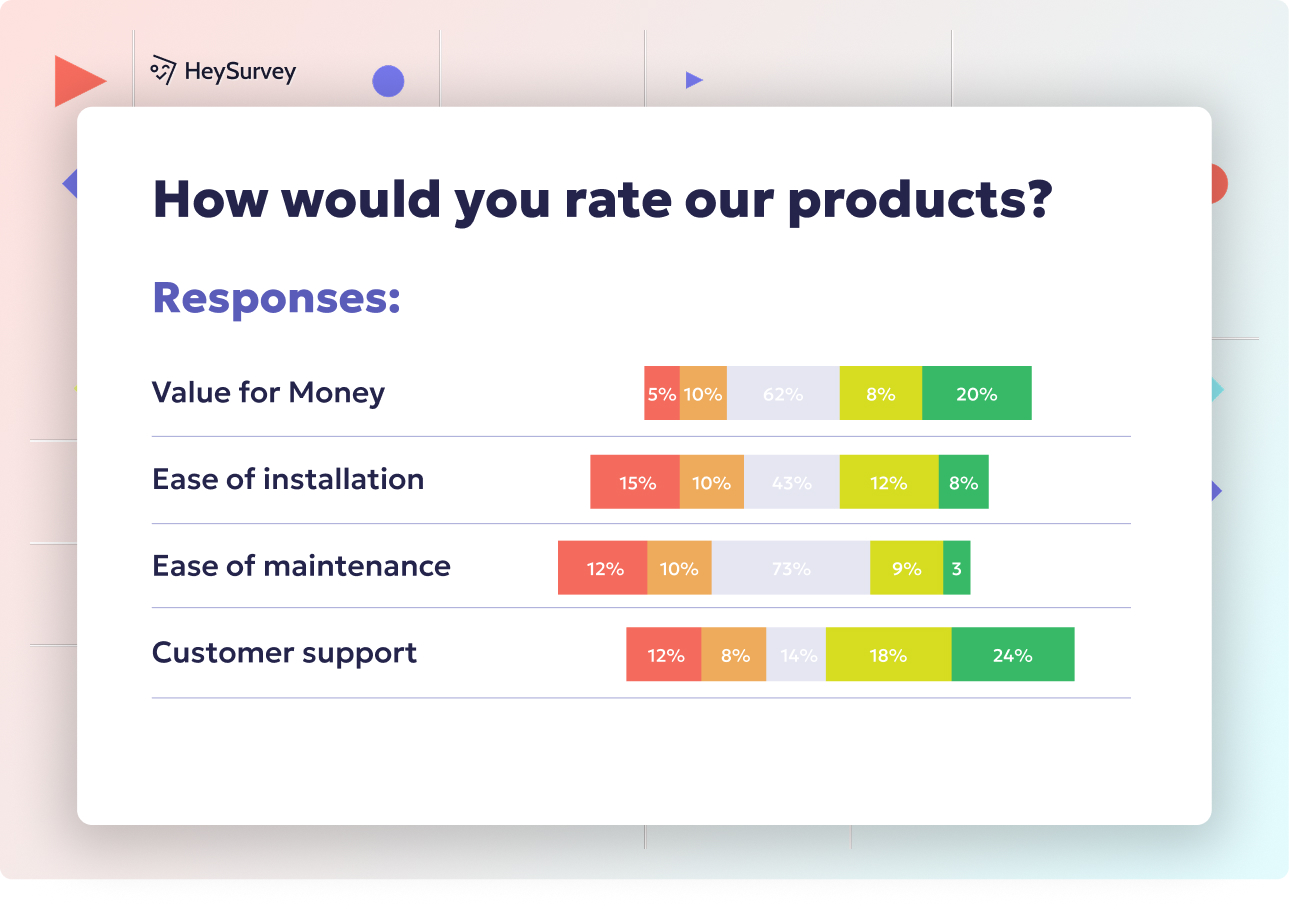32 Ranking Survey Questions: Master Types, Uses & Best Practices
Explore insightful tips on ranking survey questions with 25 sample questions to master prioritization surveys and boost data-driven decisions.
When you need deeper, actionable insights—not just a simple yes or no—ranking survey questions are your secret weapon. Unlike rating scales or multiple-choice items, ranking questions (also called rank order questions or prioritization surveys) ask people to put options in order from best to worst. This means you see what matters most, not just if people like or dislike something. Ranking questions are especially powerful in product development, customer experience (CX), user experience (UX), HR, and market research, because they force choices and bring rich clarity to what truly stands out.
Understanding How Ranking Data Works
Mechanics of Ranking Questions
Ranking survey questions gather ordinal data by prompting respondents to arrange a set of items, from most to least preferred. This is different from rating each item on its own scale. Rankings force participants to make tough decisions and direct trade-offs, eliminating indecision and neutrality that can come with rating scales.
When responses come in, you often use weighted scoring to quantify overall preferences. For example, the top choice might receive five points, the second choice four, and so on. Calculating total scores across all participants surfaces clear favorites.
Ties are another piece of the puzzle. Many preference ranking tools don’t allow ties, making respondents truly commit to an order. Others may let users indicate two or more options as equally important, but this can dilute insight into genuine priorities.
Analytical Advantages & Limitations
The ordinal scale structure of ranking data has unique strengths. You're likely to:
- Identify what truly stands out in people’s minds
- Quickly spot the top winners or pain points
- Find market segments or demographics with distinct priorities
But there are limitations, too. For instance, a first-place and a second-place finish might be separated by a hair, or by a gulf, but a standard ranking won’t show you the distance between preferences (unlike rating scales that offer more nuance).
Forced ranking is great because it breaks ties and exposes trade-offs—but it’s not ideal if participants genuinely feel two or more options are equal. And while ranking is powerful for SERP relevancy, it may frustrate respondents if overused or poorly structured.
Ranking’s blend of simplicity and richness makes it a must-have tool for any robust research toolkit.
Research indicates that ranking questions, while more time-consuming, yield responses less affected by satisficing, resulting in higher reliability and validity compared to rating questions. (en.wikipedia.org)
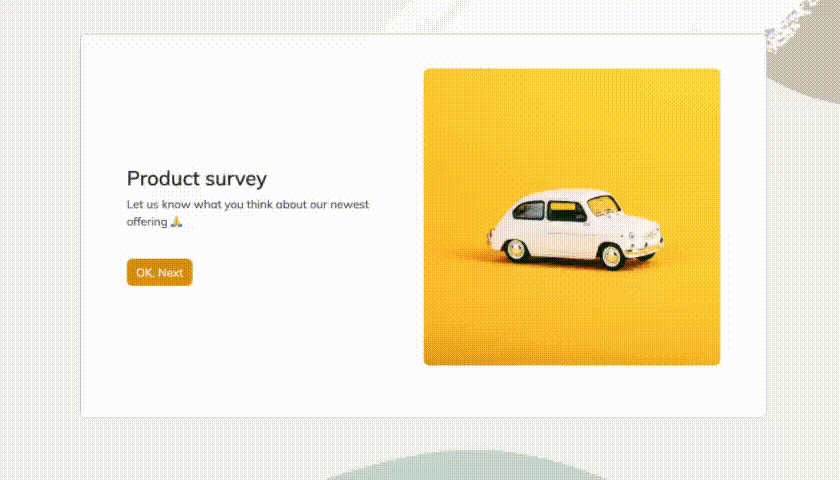
Creating a ranking survey with HeySurvey is surprisingly simple, even if you’re just starting out. Follow these 3 straightforward steps to launch your first survey—and get valuable priorities from your respondents in no time!
Step 1: Create a New Survey
- Head to HeySurvey and click Create New Survey.
- Choose whether you want to start from scratch with an Empty Sheet, pick a Pre-built Template (like a ranking or prioritization survey), or use Text Input Creation to type your questions directly.
- Give your survey a name inside the Survey Editor—this helps you stay organized as your question list grows.
If you like, jump straight to a ranking survey template by clicking the button below the instructions—no setup hassle!
Step 2: Add Your Ranking Questions
- Click Add Question at the top or between existing questions.
- Select a question type that fits ranking, such as a Choice question where respondents can order options, or a Scale if you want them to rank via slider or ratings.
- Input your question text and list the items you want ranked (e.g., product flavors, feature options).
- Use settings to require answers or allow/disallow ties according to your preference.
- For extra clarity, add images or descriptions to each option if you want to spice up your survey.
Step 3: Publish Your Survey
- When your survey is in tip-top shape, hit the Preview button to see exactly how it looks for respondents.
- Feel free to tweak fonts, colors, or animations via the Designer Sidebar to align with your style.
- Once ready, click Publish. You’ll get a shareable link that you can distribute via email, social media, or embed on your website.
- Remember, to publish and view responses, you’ll need to create a free HeySurvey account (takes just a minute).
Bonus Step 1: Apply Your Branding
- Add your company logo in the branding section, found at the top left in the Designer Sidebar.
- Customize colors, fonts, and backgrounds to make your survey feel truly yours.
- This small touch boosts respondent trust and engagement.
Bonus Step 2: Define Advanced Settings
- Use the Settings Panel to:
- Set survey start and end dates for controlled availability.
- Limit the number of responses, so you don’t get overwhelmed by data.
- Add a Redirect URL to take respondents somewhere special after submission.
- Decide if respondents can view results immediately—handy for some ranking surveys with aggregated charts!
- Set survey start and end dates for controlled availability.
Bonus Step 3: Skip Into Branches for Smart Paths
- Make your survey adapt dynamically with branching.
- For example, after a ranking question, you can send respondents to specific follow-ups based on their top choices.
- This personalizes the experience and helps collect richer insights without making the survey drag on.
With these easy steps and extras, you’ll build a sleek, insightful ranking survey that’s sure to deliver clear priorities. Ready to get started? Just hit the template button below and watch your data transform!
Product Preference Ranking Surveys
Why & When to Use This Type
Product ranking surveys are superb in situations where you need to understand market preferences with limited but high-value samples. Think concept testing, A/B/n trials, or even choosing which product flavor should launch next. If resources are tight but stakes are sky-high, a clear priority list is gold.
With consumer preference ranking, you move beyond “do you like it?” to “which one would you choose?” That’s the difference between polite applause and a standing ovation. It’s about finding the true showstopper.
Such surveys are often deployed during:
- Early product development and concept testing
- Refinement of prototype features or packaging
- Evaluating new SKUs or limited edition products
- Informing go-to-market strategies by filtering top contenders
- Validating hypotheses when statistical power or sample size is constrained
Sample Questions
- Rank the following product flavors from most to least appealing.
- Order these packaging designs based on purchase likelihood.
- Arrange these price points from most acceptable to least acceptable.
- Rank potential brand names in order of memorability.
- Prioritize these feature bundles for your next purchase.
Using this data, teams can zero in on what the market craves, avoid costly missteps, and iterate rapidly. The right product ranking survey unlocks real-world choices and lets leading options shine.
Limiting ranking questions to 6–10 items enhances reliability, as middle rankings in longer lists tend to be less meaningful. (qualtrics.com)
Feature Prioritization Ranking Surveys (SaaS & Digital Products)
Why & When to Use
In the buzzing world of software-as-a-service and digital product development, feature ranking tools keep you focused. When competing priorities shout for engineering attention, only sharp feedback cuts through the noise. Enter roadmap surveys—perfect for sprint planning, grooming the backlog, or before rolling out to beta testers.
These ranking exercises are invaluable because they:
- Ask users to weigh features against each other
- Turn “nice to have” into “must have”
- Help product managers allocate limited resources
- Prevent feature bloat by spotlighting what really matters
- Guide iterative releases by validating what should launch next
Sample Questions
- Rank these new app features by importance to your workflow.
- Order integration options you’d like to see next.
- Prioritize mobile enhancements for our next release.
- Rank dashboard metrics you check most often.
- Arrange support channels by usefulness.
What’s brilliant about this process is that it communicates customer voice directly into the sprint board. It’s like having your users at the prioritization table—without needing to bribe the IT crowd with extra coffee.
A roadmap survey using feature ranking isn’t just about what gets built next—it ensures every update fits real-world needs, earns high adoption, and drives product love.
Customer Satisfaction Attribute Ranking Surveys
Why & When to Use
Understanding the drivers behind customer delight is the secret to next-level CX. A CX ranking survey dives deep into what matters after the initial glow of a purchase fades. These surveys are popular post-purchase, after an NPS request, or as part of regular quality audits.
The reason? While a rating scale captures overall satisfaction, only a ranking reveals the hierarchy of what customers value (or detest). Maybe quick delivery matters more than a glittery package, or maybe it’s the support staff’s empathy that seals the deal.
These service attribute ranking surveys are mission-critical when you need to:
- Identify which service details drive loyalty
- Find pain points or hidden moments of delight
- Prioritize investments in training, technology, or policy changes
- Pair qualitative feedback with concrete action steps
- Uncover differences by channel, location, or customer segment
Sample Questions
- Rank these aspects of your recent service experience from best to worst.
- Order delivery factors that mattered most to you.
- Prioritize these website elements that influenced your purchase decision.
- Rank after-sales services by helpfulness.
- Arrange support response traits by importance.
The real magic happens when the results show not just what customers think, but why. So, next time someone says they’re “mostly satisfied,” a CX ranking survey will reveal what’s making them stick—and what might drive them away.
Research indicates that ranking questions in customer satisfaction surveys can lead to respondent annoyance and errors, potentially compromising data quality. (greatbrook.com)
Market Research & Concept Testing Ranking Surveys
Why & When to Use
Great ideas are a dime a dozen. Knowing which ones actually excite people is the holy grail for any marketer or innovator. Enter the concept ranking survey, your trusty sidekick for early-stage ideation, advertising pre-tests, and positioning work.
With marketing research ranking, you strip away hype and guesswork. Ask your target audience to order options based on impact, novelty, or personal relevance. This approach particularly shines when:
- Comparing several concepts, headlines, or visual treatments
- Testing brand positioning before the big launch
- Evaluating new messages during campaign development
- Sifting through innovation pipeline clutter
- Allocating creative budget where it counts
Why settle for intuition when you can base your next move on hard evidence of what’s memorable, persuasive, or simply cool?
Sample Questions
- Rank these ad headlines by attention-grabbing power.
- Order concepts based on perceived innovation.
- Prioritize taglines for brand fit.
- Rank visual treatments by clarity.
- Arrange value propositions from most to least persuasive.
This is your ticket to standing out in a noisy marketplace. The concept ranking survey doesn’t just filter ideas—it spotlights the unicorns and saves everyone from wild-goose chases.
Employee Engagement Priority Ranking Surveys
Why & When to Use
If you want to know what really matters to your team (hint: it’s rarely the free granola bars), workplace priority ranking questions are the way to go. Use them in annual engagement surveys or bite-sized pulse checks to optimize every HR dollar and hour.
A smart HR survey ranking lets employees flag not just what’s important, but what’s urgent—and what can wait. No more endless wish lists. Now you can focus on improvements that will have the biggest impact.
Deploy these surveys when you’re:
- Reviewing benefits or perks programs
- Deciding on staff training and development priorities
- Planning office upgrades or workplace design changes
- Fine-tuning internal comms channels
- Revising employee recognition schemes
By forcing trade-offs, you’ll uncover consensus and outlier opinions alike—fueling laser-focused HR strategies.
Sample Questions
- Rank these benefits in order of personal value.
- Prioritize training topics you need most.
- Order workplace improvements by urgency.
- Rank communication channels you prefer.
- Arrange recognition programs by impact.
Don’t just guess what employees want—ask them to rank their needs and watch morale (and productivity) climb. With workplace priority ranking, you make every HR initiative count.
Event Feedback Element Ranking Surveys
Why & When to Use
Whether it’s a blockbuster conference or a cozy workshop, nothing improves your next event like a rock-solid event ranking survey. Standard post-event surveys just scratch the surface—ranking tells you which sessions, speakers, or logistics made the magic happen.
Use post-event feedback ranking questions immediately after an event, when memories are fresh and suggestions flow freely. Your goal? Identify not just good and bad, but the real standouts (for better or worse).
Situations where event feedback rankings are priceless:
- Prioritizing which session topics to expand (and which to quietly retire)
- Evaluating speaker effectiveness (bye-bye, monotone mic hogs)
- Spotting the best networking opportunities
- Refining venue choices based on actual attendee feedback
- Streamlining communication touchpoints for clarity and timeliness
Let your audience hand-pick the best bits—future attendees (and your reputation) will thank you.
Sample Questions
- Rank session topics by relevance.
- Order speakers based on delivery effectiveness.
- Prioritize networking opportunities you valued.
- Rank venue aspects (location, amenities, accessibility).
- Arrange communication touchpoints by helpfulness.
Don’t just count survey stars—let your feedback shape the highlight reel for every event with event ranking survey strategies. Your next function will be standing-room only.
Best Practices: Dos & Don’ts for Ranking Questions
The Golden Rules of Ranking Surveys
Crafting a rockstar ranking question is an art—one that’s part science, part empathy, and a dash of psychic reading. When designing these surveys, there are crucial dos and don’ts every pro should know.
Do limit items to 5-7 options; Don’t overwhelm respondents.
- Too many choices cause fatigue and muddle insights
- Balance is key: offer options, but not a marathon decision tree
- Keep focus tight—survey time is precious
Do randomize option order; Don’t introduce order bias.
- Randomization prevents any single item from always appearing first
- Order bias is sneaky and can skew your results
- Leverage tools that randomize each respondent’s view
Do provide clear instructions; Don’t assume respondent familiarity.
- Spell out exactly what “first” and “last” mean
- Include example rankings when possible
- Avoid jargon—clear language wins hearts (and data)
Do combine ranking with follow-up open-ended questions; Don’t rely solely on rank data.
- Ranking reveals what, but open-ends reveal why
- Uncover motivations, context, or quirky choices
- Richer feedback = better decisions
Do analyze and visualize results (weighted scores, heat maps); Don’t ignore variance among segments.
- Use visual tools to turn data into stories
- Compare priorities by segment for tailored action
- Get creative—the best insights are often in the variance
Want your survey to shine? Follow these best practices for how to write ranking survey questions and avoid bias in ranking surveys. Your respondents (and results) will thank you.
Conclusion & Next Steps
Ranking survey questions breathe life into ordinary surveys by exposing true priorities and powering decisions with clarity. Experiment with formats, test what works for your audience, and never stop refining your approach. Dive in now: download a free ranking question template or launch your first survey trial! Remember—the magic begins when you ask people not just what they like, but what they’d choose first. When you need answers that matter most, ranking survey questions deliver every time.
Related Question Design Surveys

29 Quantitative Survey Research Questions Example for Success
Explore 25+ quantitative survey research questions example with clear explanations and tips for c...
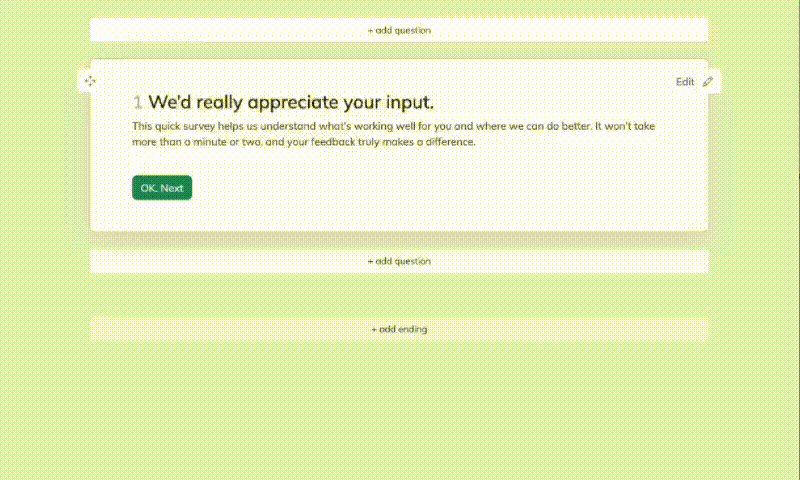
32 Good Survey Question to Boost Your Data Quality
Discover how to craft good survey questions with 30 sample questions across 8 types for better da...
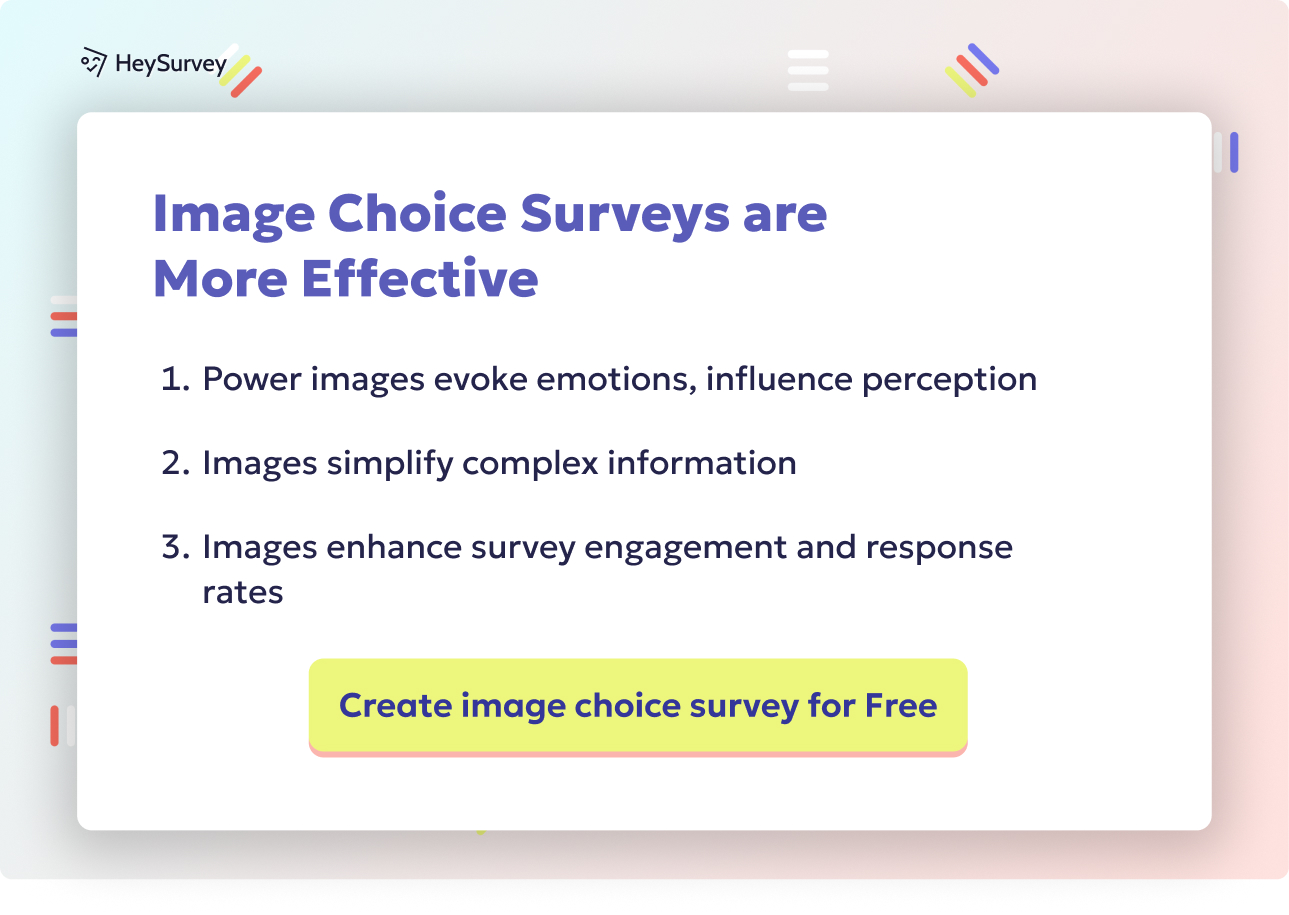
31 Survey Question Mistakes You Need to Avoid Today
Discover 25 common survey questions mistakes with real examples and expert tips to craft clear, u...
